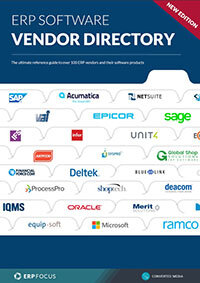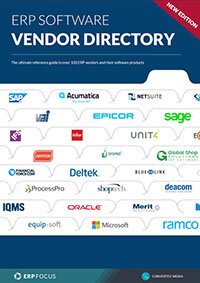Is your current ERP creating hidden costs?
Sometimes having the right tools for a job will make all the difference in how successful it turns out to be. You wouldn’t want to dig a ditch with a spoon or paint a room with a toothbrush.! But you can end up in a situation where you end up using a tool without realizing that it's impacting efficiency.
This can often happen with ERP systems. Perhaps you implemented an ERP system that was adequate when your business was small, but your business has since grown substantially and you need to do extra work to make that old system work. Or perhaps you have added an additional product line or sales channel in your business that cannot be handled well by the old system. These situations can take up extra time and costs, and even worse, hinder your revenue and profit growth without you realizing it.
It’s worthwhile for business manages to periodically take time to review their infrastructure and see if it's truly keeping up with the demands of their business.
Here are some signs that your current ERP might be causing problems and creating hidden costs:
- You have too much or the wrong types of inventory that can’t be sold leading to waste and scrap costs
- You lose sales because you didn’t have enough available inventory
- Your customers are complaining about poor customer service
- You find that your pricing is either too low or too high causing either lost profits or lost sales
- You have slow collection on invoices due to inadequate information
- Your employees need to enter the same data into multiple systems because the systems are not integrated
- Your systems go down frequently due to hardware or other problems
- Your employees are spending a significant amount of time with the logistics of running the system including applying software updates, performing data backups, replicating data, etc.
- It takes too long to train new employees on using the system due to the complicated and non-intuitive user interfaces.
- You worry about hackers and the security of your data because of older system technologies or the inability of the system to allow data access on a per-user basis.
Use our ERP Selection Survival Guide to find out how to select the right ERP for your business
The good news is that once you come to the realization that a new ERP system may be beneficial, there are many options available to you, for example, some ERP systems are cloud-based solutions. The advantage of cloud ERP is that they don’t require floor space, IT support staff, utility bills, hardware costs, and software acquisition costs. Cloud-based solutions will also not require periodic maintenance such as applying software upgrades or data backups although they do require a monthly subscription fee.
Finally, you should consider the impact on your employees when adopting a new system. Good systems will make the implementation as easy and quick as possible. It should be easy to customize to provide the information you need in a logical and high readable format. The interface should be using an attractive graphical user interface (GUI) and allow your employees to access any piece of data with two clicks or less. High security to external hackers will be assured due to safeguards built into the cloud providers systems. But, in addition, you should be able to include additional internal security within your own company by configuring role-based access so that employees can only view or alter the information relevant to their particular job function.
Free white paper

ERP Software Vendor Directory
Put the most comprehensive ERP vendor directory on your desk today

Related articles
-

Change management for ERP implementation: a case study
A real-world example of the benefits of weaving change management into the fabric of an ERP imple...
-

Secret KPI: Why Your ERP Implementation Team Matters More Than Software
Learn how Godlan ensures successful ERP implementation for manufacturers with proven strategies &...
-

Funding an ERP: how and why?
What funding is available for ERP including loans and grants

